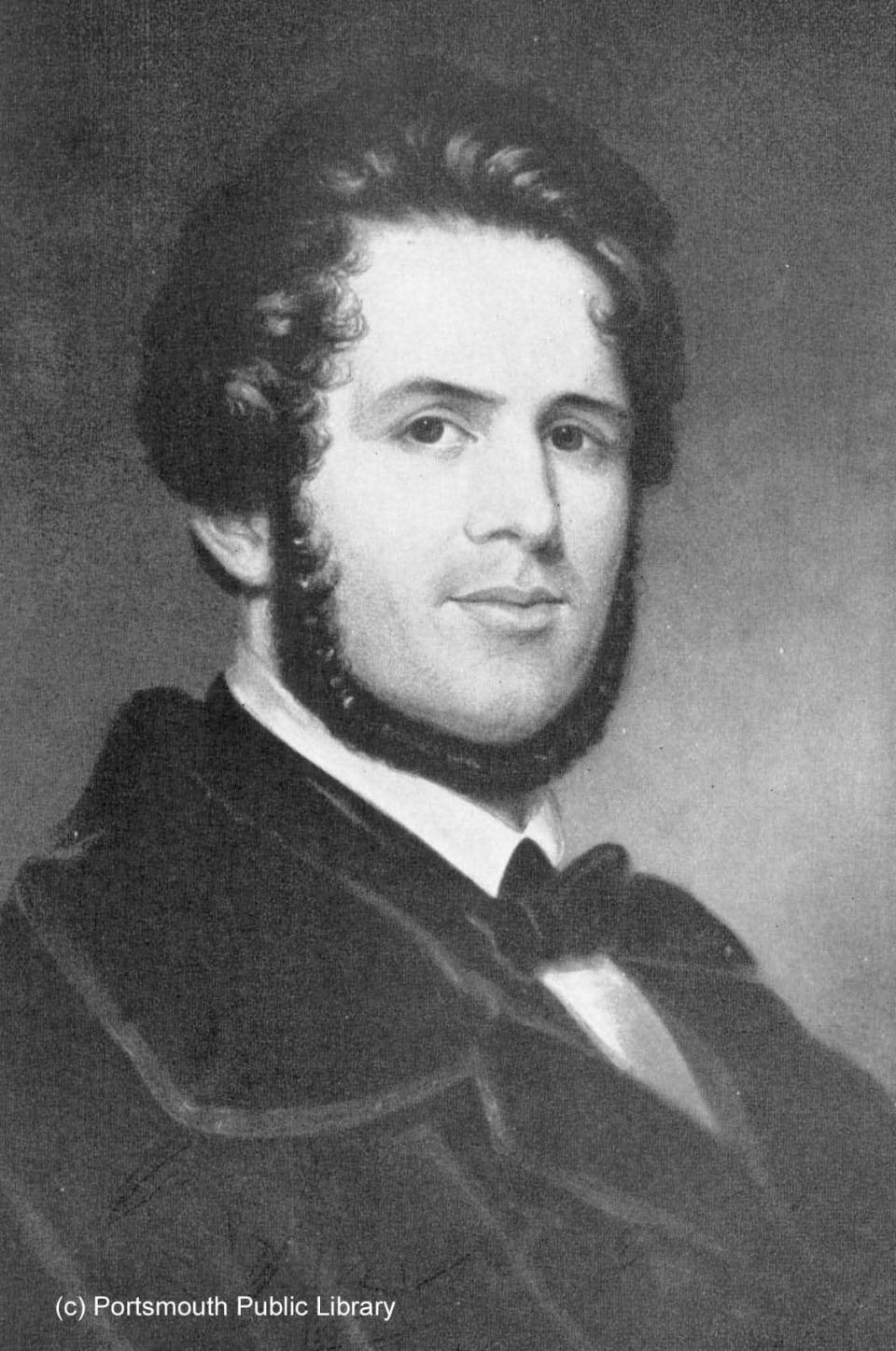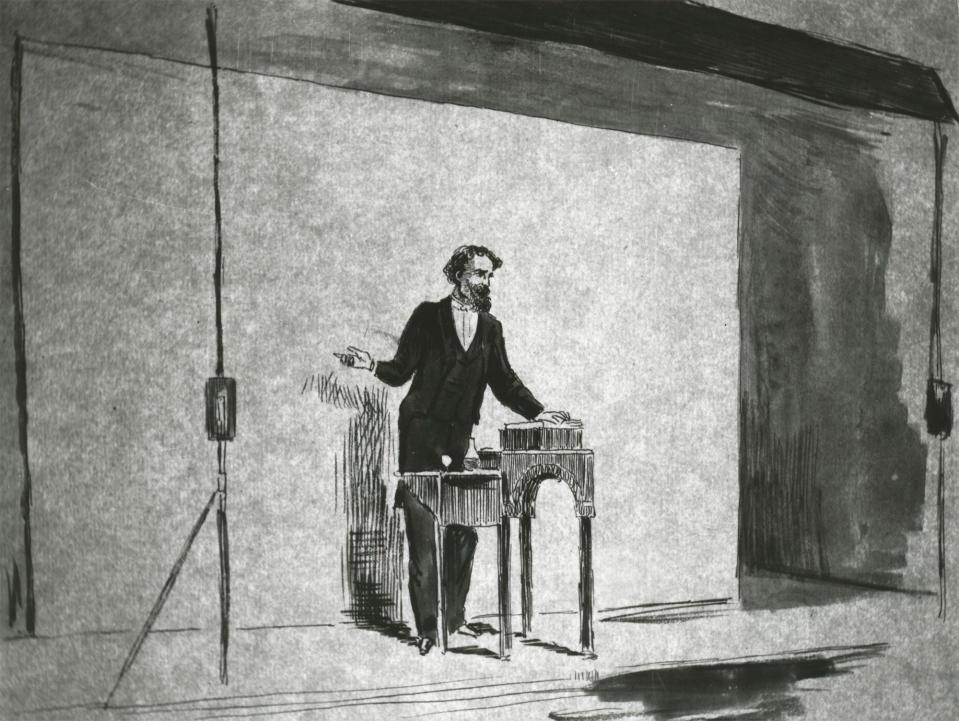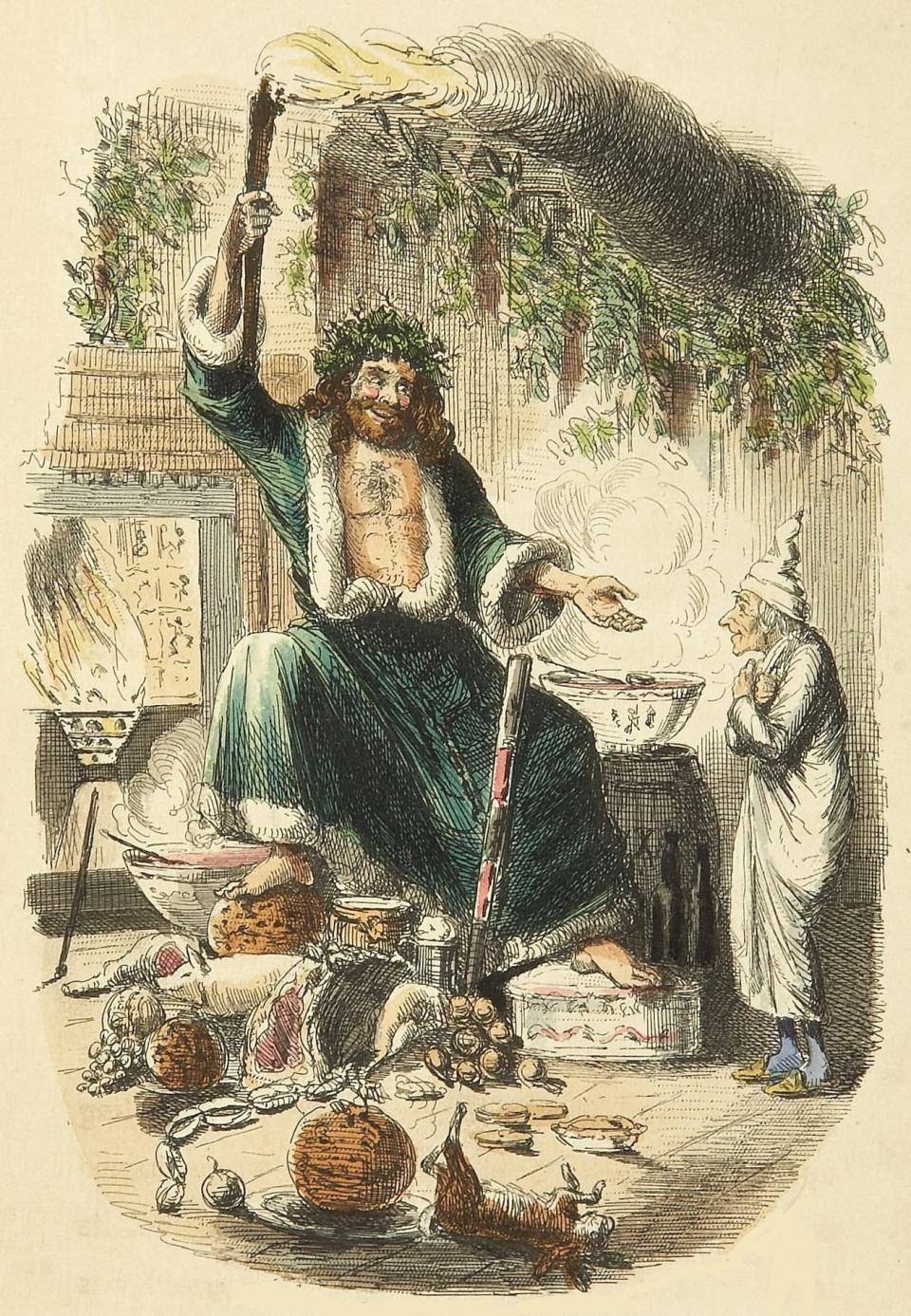How a Portsmouth-born publisher brought Charles Dickens to America
- Oops!Something went wrong.Please try again later.
In a whirlwind five-month tour, novelist Charles Dickens wowed American audiences. Beginning in Boston in 1867, the British superstar gave dramatic readings of his popular novels, including “A Christmas Carol.” The sold-out tour was a critical and financial triumph — thanks to a boy from New Hampshire.
The world’s most famous writer had been to the United States prior to the Civil War, and he was not impressed. Two decades later, it was Portsmouth-born writer and publisher James T. Fields who persuaded Dickens to give America a second chance. Here’s how it happened.

Who was James T. Fields?
A rare portrait of a bright-eyed James T. Fields (born 1816) hangs on a wall of the Portsmouth Public Library. Five years younger than Dickens, Fields was raised by a strict and loving mother in this city's South End. His father, a mariner, had died at sea.
Fields attended school at Portsmouth Academy (now Discover Portsmouth Center) and read books sitting in the window of the Portsmouth Athenaeum. Apprenticed to a Boston publisher as a young teen, he gained a reputation as both a generous friend to writers and a shrewd businessman.
His Boston firm, Ticknor & Fields, became the hub of literary New England, representing authors Henry Wadsworth Longfellow, Henry David Thoreau, Oliver Wendell Holmes, and Harriet Beecher Stowe. It was Fields who turned John Greenleaf Whittier, the Quaker poet, into a financially successful author and who convinced a shy, handsome, and insecure Nathaniel Hawthorne to publish The Scarlet Letter.

Dickens' first American tour
With his wife Catherine, Charles Dickens first set foot on American soil in 1842. He was already the author of five bestsellers including "Oliver Twist" and "The Pickwick Papers." Dickens was then just 29. His arrival attracted a media frenzy from the moment his ship docked in Boston.
Among Dickens’ early admirers was James T. Fields, then the junior partner at what would become Ticknor & Fields. Fields joined a horde of fans hanging out at Dickens’ hotel the night of his arrival. The young publisher strained for a glimpse of the English celebrity.
That first night, Fields was little more than a stalker as he followed the novelist and a friend through the city streets and into a saloon. It was a “stinging” cold night with a full moon, Fields later recalled. Dickens was “muffled up in a shaggy fur coat.”
The more Dickens and his wife saw of America in 1842, the less they liked it. He became a stern critic of southern slavery, earning himself many enemies. Tied to a strict schedule of readings, harsh travel conditions, and social events, Dickens complained to his friend: “I can do nothing that I want to do, go nowhere I want to go, and see nothing that I want to see.”
History Matters: Pomp and Candace Spring invisible no more thanks to Black Heritage Trail
Dickens' triumphant return to America
A quarter-century later — following the success of "David Copperfield," "Great Expectations," "A Tale of Two Cities," and more novels and short stories — Dickens was the most famous writer in the world. America had changed following the Civil War. So had Dickens. He was exhausted and legally separated from Catherine. He had taken a new lover (who did not accompany him to America) and lost two of his 10 children.

James T. Fields, by this time, had become the exclusive American publisher of books by Dickens and other popular British writers. With effort, Fields managed to convince his most famous client to return to the United States.
Onstage, Dickens was better than ever. In an era before blockbuster films or rock concerts, he was the ultimate entertainment. The press called him “the Boz, the Inimitable, the Great Enchanter” who could mesmerize audiences with his dramatic readings. Dickens inhabited his fictional characters like no one before him. Crowds camped in the frigid streets all night for one-dollar tickets that scalpers sold for $10.
The one-man show was without equal. Dickens stood alone behind a mahogany podium. He spoke without the aid of scenery, props, music, amplification, or costumes. Each night he presented two of his novels condensed into a single hour. He became all the characters, his performance enhanced only by the raising and lowering of gas lamps.
'A Christmas Carol' cast of one
In December 1867, Dickens performed his abridged "Christmas Carol." Although written in 1843, this was the first live American performance by the author. In 76 shows in 18 cities, Dickens stepped onstage, introduced himself, and launched into his act.

In Springfield, Massachusetts, a critic wrote that Dickens “dazzles you with 20 personalities.” The audience “sat fixed and speechless,” Fields said following Dickens rendition of "A Christmas Carol." In New York, although lame and suffering from a head cold and sore throat, he excelled at every reading. After Tiny Tim’s final, “God bless us, everyone!” there was a long silence, Fields remembered. Suddenly, as if waking from a shared trance, the crowd exploded into shouts, sobs and applause.
During a 10-minute intermission, Fields was among the only visitors allowed in Dickens’ dressing room. The publisher had waited two decades, he said, to hear Dickens read his Christmas classic. And all day, Fields confessed, he had been afraid he might die five minutes before the theater opened and miss the show. “You have given me a new lease on life,” Fields told Dickens.
Dickens becomes fiction himself
Fields and his wife, Annie, also an excellent writer and editor, lived in a narrow three-story house backed up against the Charles River in Boston. Ralph Waldo Emerson called it "the ark out of the modern deluge." Henry James said the Fields house was his "merciful refuge." Charles Dickens refused to stay in any other private home during his Boston visit. And there, Portsmouth poet Celia Thaxter recalled, she dined with the celebrated Mr. Dickens.
Although Dickens' American tour was lucrative, it was terribly draining. Returning home, he launched a "farewell tour" with public readings throughout Great Britain in 1868-69. In ill health, but $2 million richer (in modern dollars), he began a new novel entitled "The Mystery of Edwin Drood." Charles Dickens died of a stroke in 1870, leaving the manuscript half finished and the mystery unsolved.
In 1871, James T. Fields retired from publishing to focus on his own writing and lecturing. He died 10 years later. A brilliant and important figure in American literature, Fields rarely gets the attention he deserves, even in his own hometown.
Fields appears as a fictionalized character in "The Last Dickens" (2009), a novel by Matthew Pearl. The plot swirls around the cut-throat Victorian publishing industry, the opium trade, the rise of American copyright laws, Dickens’ American tour, and the unknown ending of "The Mystery of Edwin Drood."
The 2017 film, "The Man Who Created Christmas," explores the backstory in which, strapped for funds, Charles Dickens created his holiday masterpiece in only six weeks. Again, Dickens is transformed from a literary figure into a fictional character.
'Imagine That!': Portsmouth Historical Society to explore the power of picture books

And in his attempt to capture the essence of the Christmas spirit, Dickens has become a tradition himself. His little moral fable is ubiquitous, leaving viewers to wonder – who really played Scrooge best? Was it Bill Murray, Vincent Price, Kelsey Grammar, Albert Finney, George C. Scott, Patrick Stewart, Mr. Magoo, Mickey Mouse, the Muppets, or countless other actors? But the award for the greatest performance of Scrooge, Marley, Bob Cratchit, and Tiny Tim must go to Charles Dickens himself. And New Hampshire played a starring role in bringing this classic tale to the American stage.
Copyright 2021 by J. Dennis Robinson, all rights reserved. Dennis is the author of a dozen history books on topics including The Music Hall, Strawbery Banke Museum, Privateer Lynx, the 1873 Smuttynose ax murders, and Wentworth by the Sea Hotel. His first history mystery novel, "POINT OF GRAVES," is now available at local bookstores and and on Amazon.com. He can be reached at dennis@myseacoastnh.com or visit jdennisrobinson.com.
'A history mystery': Local writer pens novel shedding light on Portsmouth’s Black heritage
This article originally appeared on Portsmouth Herald: Portsmouth NH-born publisher brought Charles Dickens to America

